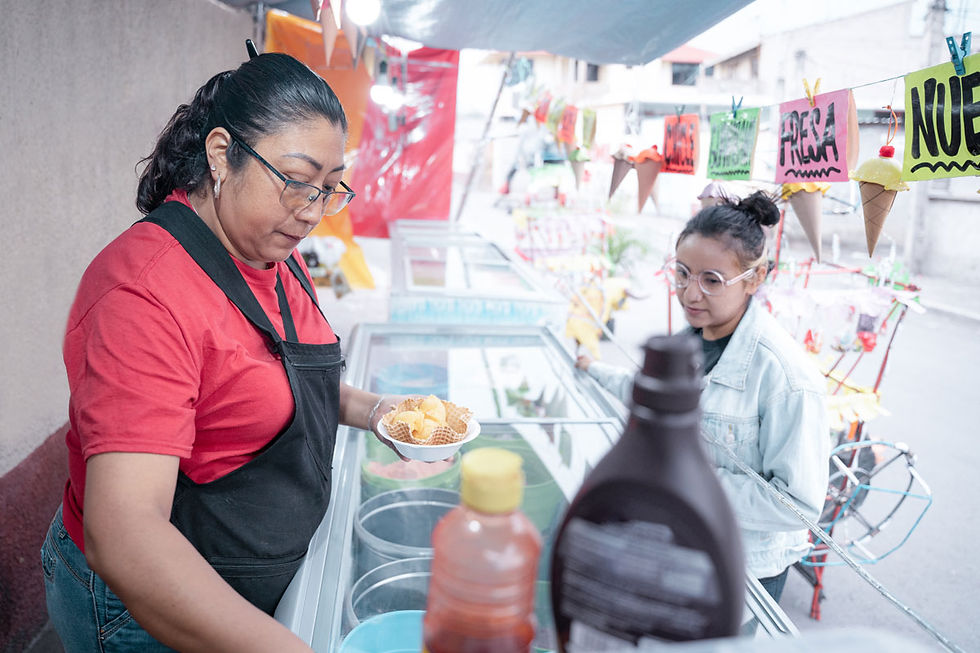Border 4.0: The Mexican Diaspora Turns the Line into a Binational Wealth Zone
- Editorial

- Sep 18
- 3 min read

On North America’s economic map, the border has ceased to be a dividing line: it is now a platform. The rise of the Mexican diaspora in the United States—through business, professional, and community networks—is fueling the creation of de facto “special economic zones”: preferential tax and customs regimes, strategic trade facilities, and foreign-trade zones that connect capital, talent, and supply chains on both sides of the boundary. The question is no longer whether the diaspora matters to the border economy, but how to accelerate the model.
The first driver is financial. In 2024, remittances to Mexico hit a record of 64.7 billion dollars, 2.3% more than in 2023. Ninety-nine percent arrive through electronic transfers, which simplifies their formalization and potential channeling into productive investment if local vehicles and guarantees exist. These resources do more than sustain consumption: they can leverage seed capital for municipalities and matching funds for industrial corridors when tied to local economic development programs.
The second driver is trade. In 2024, goods exchange between the United States and Mexico totaled 839.9 billion dollars, with over 70% processed in Texas. Laredo alone handled roughly 339 billion, consolidating its position as the country’s top trade port by value. At the continental level, trade with Canada and Mexico reached 1.6 trillion dollars, a 1.8% annual increase, confirming the strength of USMCA supply chains. This volume creates critical mass for industrial parks, 24/7 logistics, and nearshoring partnerships powered by diaspora capital.
The institutional scaffolding is in place and being updated. Mexico extended fiscal incentives in the Northern Border Region until December 31, 2025—an effective 8% VAT and 20% income tax in 45 municipalities—while mechanisms such as Strategic Trade Zones allow firms to defer taxes and simplify customs processes for advanced manufacturing and logistics. On the U.S. side, Foreign-Trade Zones in border counties complement the ecosystem with tariff and operational benefits. This “package” effectively creates binational special economic zones where the diaspora invests, consumes, and hires.

Technology accelerates the model. The new Otay Mesa East crossing in California—designed as “clean, green, and smart”—is moving forward with phased openings and dynamic tolling, sensors, and coordinated customs procedures to reduce wait times and emissions. At the same time, the IMMEX program remains the export backbone (over 80% of manufacturing exports), with plants in electronics, aerospace, and automotive benefiting from binational supplier networks strengthened by migrant talent.
Diaspora governance already operates as a distributed “development agency.” The Global MX Network—nearly 60 chapters and over 6,000 members—connects knowledge transfer, entrepreneurship, and innovation. Meanwhile, the Institute for Mexicans Abroad enhances financial education, scholarships, and productive linkages. When these nodes intersect with trade facilities, FTZs, and tax incentives, the border becomes a platform for industrial startups, SME supply chains, and soft-landing programs for binational capital.
Data from 2024 illustrates the territorial potential. Arizona, for instance, deepened its integration with Mexico: 27.5% of its imports came from Mexico that year, and exports southbound are showing significant year-over-year growth in 2025. For municipalities in both countries, this translates into IMMEX manufacturing jobs, logistics services, and accelerated professionalization of their business base.

Looking into 2025, the challenge is not narrative but fine-tuned execution. On the regulatory front, Mexico has pledged to reimburse the potential 1% tax on cash remittances under discussion in Washington—through Financiera para el Bienestar—a gesture that protects household income and sustains community capital flows. But it requires full digitalization, banking access, and traceability to ensure this money funds municipal development and co-investment programs with state and private counterparts. On the trade side, tariff volatility and border bottlenecks demand faster rollouts of “smart border” projects like Otay II and joint customs clearance, as well as the professionalization of diaspora-focused investment attraction offices. On the technological side, the goal is for more industrial parks and Strategic Trade Zones to adopt Industry 4.0 standards—clean energy, cybersecurity, data sharing, and bilingual talent.
The pieces are on the table: if states and cities design co-investment vehicles for the diaspora, align local tax incentives with federal ones, and prioritize critical infrastructure, the border will no longer be a bottleneck. By design, it will be the largest special economic zone in the Americas.
Written by: Editorial




Comments